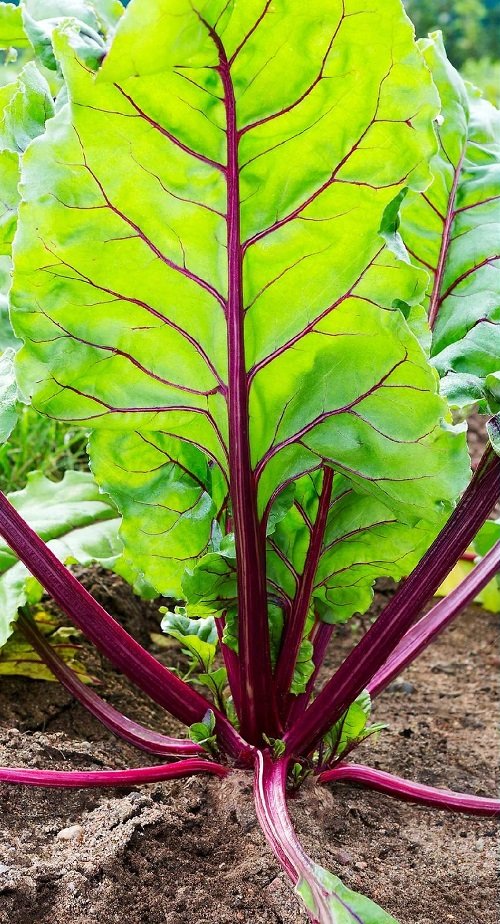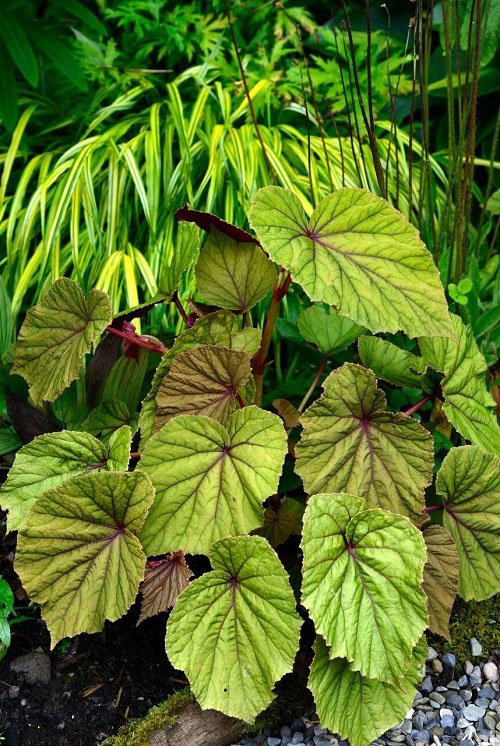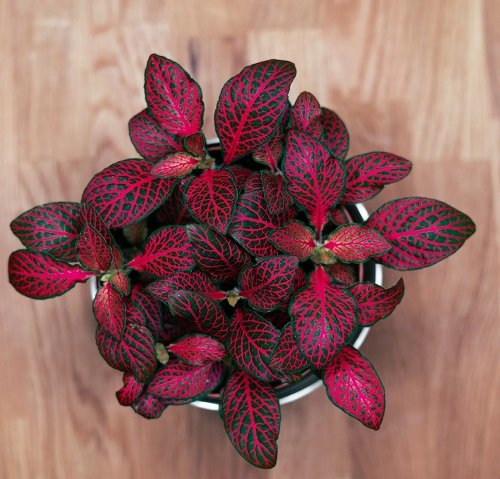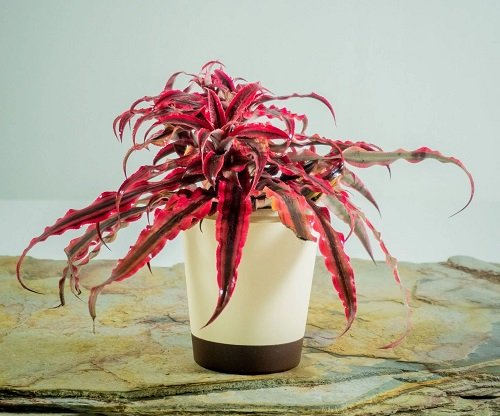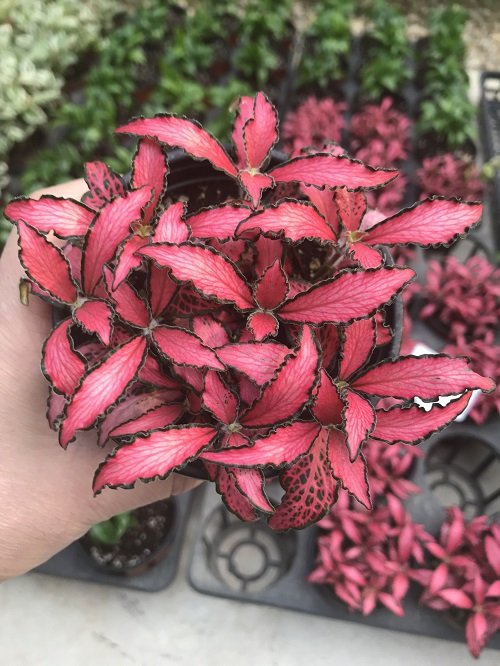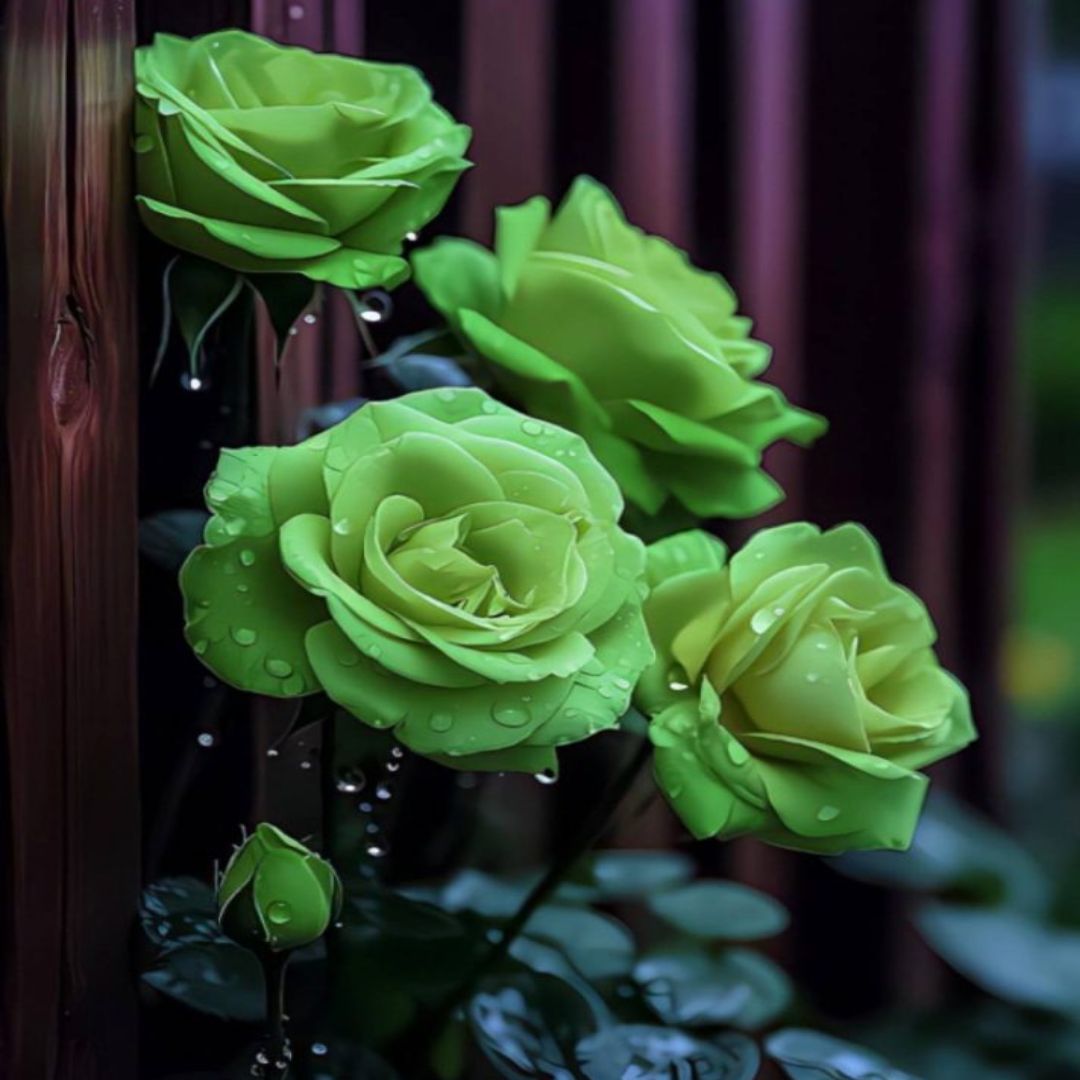Are you looking for a way to add some color to your garden or indoor space? Look no further than Plants With Red Veins on the Foliage!
So, what exactly are plants with red veins? Simply put, they are plants with leaves that feature red or reddish-pink veins that contrast with the green portion of the leaf. Here are some Plants With Red Veins on the Foliage to add some color and whimsy to your garden or indoor space.
Plants With Red Veins on the Foliage
1. Beet
Botanical Name: Beta vulgaris
USDA Zones: 2-11
Beet is a well-known vegetable that features red stems and veins on its deep green leaves. Not only is it visually striking, but it’s also a great source of nutrients and can be a great addition to your garden – that is easy to maintain.
Here is How to Grow Beets in Pots!
2. Caladiums
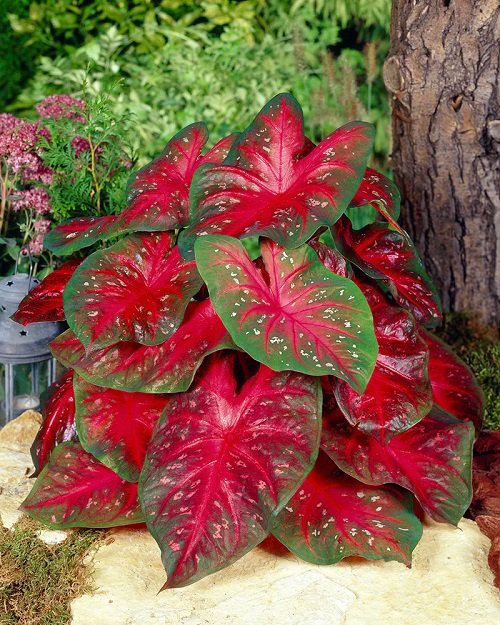 f
f
armergracy
Botanical Name: Caladium
USDA Zones: 3-11
Caladiums are popular Plants With Red Veins. These tropical beauties feature large, heart-shaped leaves that come in a range of colors, including red, pink, white, and green.
Discover different types of Caladium Here
3. Coral Bells
Botanical Name: Heuchera sanguinea
USDA Zones: 4-9
Coral Bells is a popular perennial with red stems and veins that contrast beautifully with its green leaves. It’s perfect for adding color to borders and works well in containers or mixed garden beds.
4. Hardy Begonia
Botanical Name: Begonia Grandis Subsp. Evansiana
USDA Zones: 6-9
Begonia Grandis Subsp. Evansiana is a hardy begonia that features delicate pink flowers and leaves with red veins. While not edible, this plant is great for adding color and texture to shady areas of the garden. It’s also low maintenance and relatively easy to care for.
Here is complete information on Elatior Begonia care!
5. Mini Red Vein
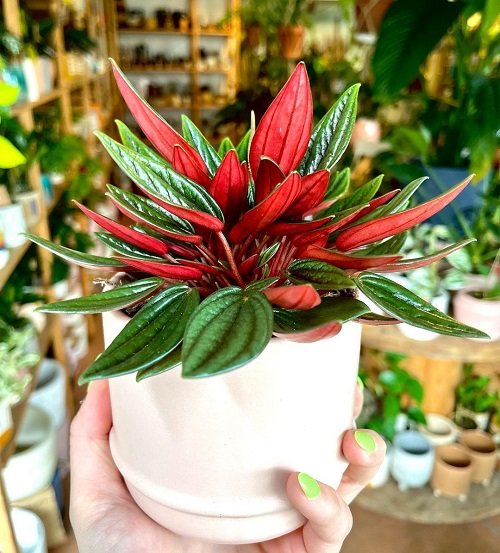
acapulcosocialclub
Botanical Name: Peperomia ‘Rosso’
USDA Zones: 10-12
Mini Red Vein is a small but mighty plant that features red veins on dark green leaves. Its compact size makes it perfect for terrariums or small indoor spaces, and it’s relatively easy to care for. This plant prefers bright, indirect light and well-draining soil.
Here are some of the best houseplants for a kid’s room!
6. Red Anne
Botanical Name: Begonia ‘Red Anne’
USDA Zones: 6-11
Red Anne is a beautiful Begonia hybrid with striking red veins on the green leaves. The plant is native to tropical and subtropical regions and is often grown as a houseplant. It’s perfect for adding color to shady areas and works well in containers or as a ground cover.
Check out the best begonia varieties here
7. Red-Veined Prayer Plant
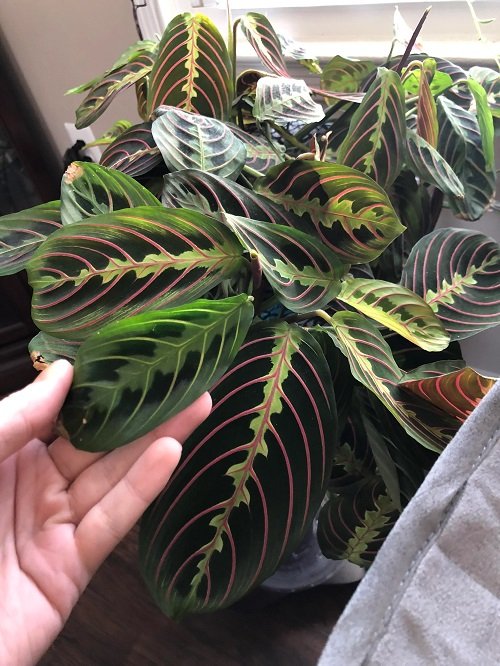
Botanial Name: Maranta leuconeura
USDA Zones: 11-12
One of the most popular plants with red veins is the red-veined prayer plant. This stunning plant features deep green leaves with bold red veins that make it a standout in any space. Plus, it’s low maintenance and easy to care for.
Discover the best Maranta varieties here
8. Red Star
Botanical Name: Cryptanthus
USDA Zones: 8-11
Red Star is a tropical plant with unique rosette-shaped leaves that feature bright red veins. This slow-growing plant can be easily propagated through division. Thus making it a perfect choice for adding a touch of the exotic to your indoor plant collection.
Here are Some of the Red Leaf Plant varieties!
9. Red Veined Nerve Plant
Botanical Name: Fittonia verschaffeltii ‘Super Red ‘
USDA Zones: 11-12
If you’re looking for something a bit smaller, the Red-veined Nerve Plant is an excellent Plant With Red Veins. Its compact size and vibrant red veins make it a perfect choice for terrariums or small indoor spaces.
Look at the Most Beautiful Fittonias here
10. Red Veined Sorrel
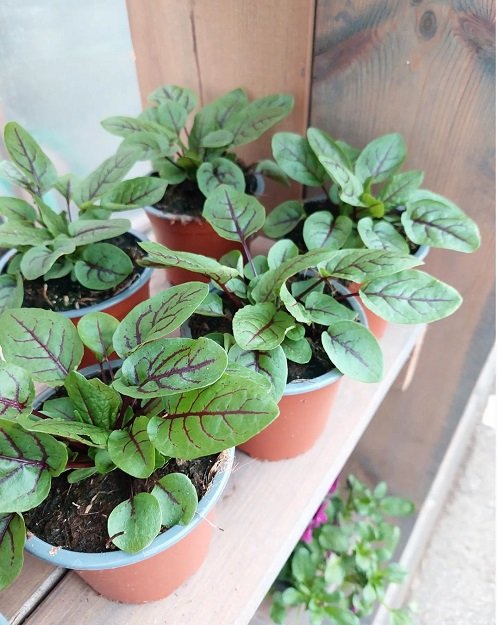
ziedu.raksti
Botanical Name: Rumex sanguineus
USDA Zones: 4-8
Another beautiful option is the Red-veined Sorrel, also known as the blood-veined Sorrel. This herbaceous perennial features striking red veins that contrast beautifully with the green leaves.
11. Swiss Chard
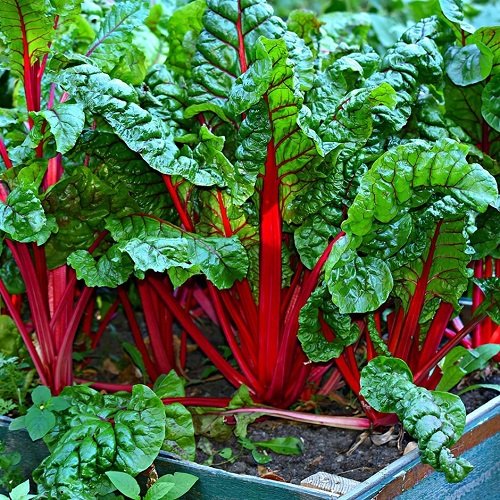
crocdn
Botanical Name: Beta vulgaris subsp. cicla
USDA Zones: 2-11
Swiss Chard is another Plant With Red Veins, which is also a great source of nutrients, as the plant is also a part of the beet family. It is also relatively easy to grow and can be harvested throughout the growing season.
